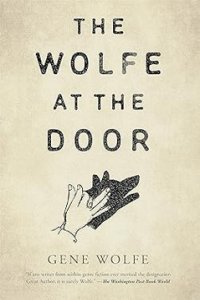Gary K. Wolfe reviews William H. Patterson, Jr.’sRobert A. Heinlein Biography
 One of the fascinations and frustrations of reading literary biographies is that we almost always begin with the vain hope that we’re going to unlock the secret of where all those wonderful stories came from, and almost always realize that, once again, we’re not going to get it. Since writers lead largely interior lives, their fiction is at best only partly accounted for by external circumstances, but except in very rare circumstances that fiction is what leads us to pick up a biography in the first place. (I suspect that many of the readers of Julie Phillips’s Tiptree biography were not previously familiar with the fiction, but that’s an exceptional case.) This leaves the biographer trying to negotiate a path between the two unsatisfactory extremes of writing a critical survey on the one hand, or assembling a shapeless dossier on the other. SF is fortunate in that it’s always had a substantial cadre of fan-scholars willing to devote years to assembling the dossiers, but too often the result has been endlessly detailed compilations of every minor datum that could be unearthed, occasionally punctuated by exaggerated claims that collectively read like a positio for instant canonization. One can easily go into these things (and I am refraining from mentioning titles here) sharing at least some of the author’s assumptions regarding the importance of the subject, but come out, exhausted, wondering if the subject was really that important, or if all those details about when the check arrived in the mail (or what color the mailbox was) really added anything substantial to our understanding or appreciation of the fiction, let alone lent any coherent shape to the biography itself.
One of the fascinations and frustrations of reading literary biographies is that we almost always begin with the vain hope that we’re going to unlock the secret of where all those wonderful stories came from, and almost always realize that, once again, we’re not going to get it. Since writers lead largely interior lives, their fiction is at best only partly accounted for by external circumstances, but except in very rare circumstances that fiction is what leads us to pick up a biography in the first place. (I suspect that many of the readers of Julie Phillips’s Tiptree biography were not previously familiar with the fiction, but that’s an exceptional case.) This leaves the biographer trying to negotiate a path between the two unsatisfactory extremes of writing a critical survey on the one hand, or assembling a shapeless dossier on the other. SF is fortunate in that it’s always had a substantial cadre of fan-scholars willing to devote years to assembling the dossiers, but too often the result has been endlessly detailed compilations of every minor datum that could be unearthed, occasionally punctuated by exaggerated claims that collectively read like a positio for instant canonization. One can easily go into these things (and I am refraining from mentioning titles here) sharing at least some of the author’s assumptions regarding the importance of the subject, but come out, exhausted, wondering if the subject was really that important, or if all those details about when the check arrived in the mail (or what color the mailbox was) really added anything substantial to our understanding or appreciation of the fiction, let alone lent any coherent shape to the biography itself.
As far as I can tell, nearly everything William H. Patterson, Jr. has published has concerned Robert A. Heinlein, and Patterson’s own background in fandom (his website says he once wrote an 80,000-word history of Phoenix fandom) suggests that his massive two-volume biography of Robert A. Heinlein – the first volume of which bears the equally massive three-colon title Robert A. Heinlein: In Dialogue with His Century: Volume 1, 1907-1948: Learning Curve – might well fall toward the fannish end of the spectrum of possible biographies. And indeed, we do find the assiduous accumulation of detail, limited discussion of individual works, and unquestioned assumptions regarding Heinlein’s centrality not only to science fiction but to modern American culture: in his introduction Patterson even compares news of Heinlein’s death to 9/11 and the assassinations of the 1960s, and tells us that ‘‘the story of Robert A. Heinlein is the story of America in the twentieth century.’’ We also learn that this is the ‘‘authorized biography,’’ meaning that Patterson was chosen for the project by Virginia Heinlein, already famous for her protectiveness regarding her husband’s reputation, before her death in 2003, and written with the full cooperation of the Heinlein estate. There are, in other words, many of the warning signs of an impending hagiography.
It comes as something of a pleasant surprise, then, that Patterson has not only written a quite readable (though at times skimmable) biography, but that he has developed a number of coherent narrative arcs in the details of Heinlein’s early life, some of which are clearly planting seeds that will likely come to fruition in the much-anticipated (and likely far more challenging) second volume. We learn, for example, of the complex of political and social influences that shaped what eventually became Heinlein’s rather individual and even eccentric views, from his family’s early involvement in Kansas City’s Pendergast machine to his experiences at Annapolis and in the Navy, his later idealistic involvement in Upton Sinclair’s gubernatorial campaign and the Social Credit movement, and his own unsuccessful run for the California assembly. Some of these early political notions found expression in his long-unpublished first novel For Us, the Living, and Patterson’s somewhat ginger treatment of this rather schematic utopia is the first real evidence we have of how he’s going to handle Heinlein’s more problematical fictions. He notes that Heinlein borrowed the innocent-yanked-into-the-future format from Edward Bellamy, suggests more vaguely that Heinlein ‘‘had already learned a thing or two from Wells’’ (without telling us exactly what), offers some neat bits of trivia (Heinlein’s old high school classmate Sally Rand provided the model for the girl), and ends up echoing the faint praise of Heinlein’s wife Leslyn that it was ‘‘certainly no worse than a lot of stuff that did get published.’’ This segues into a discussion about the state of the Heinlein marriage at that time and then, in the following chapter, into the more comfortable territory of ‘‘Life-Line’’ and Heinlein’s first acceptance letter from John W. Campbell, Jr. We’re left with only a vague understanding of what probably made For Us, the Living unpublishable at the time, though Patterson does point out how aspects of the book were mined for later novels.
In general, Patterson’s treatment of major figures in Heinlein’s life is more fascinating, and often more insightful, than his treatment of the fiction. Ernest J. King, Heinlein’s admired captain when he served on the aircraft carrier Lexington, seems a credible model for what would become the competent Heinlein hero (one of the most chilling anecdotes describes the Navy’s own simulated war-games attack on Pearl Harbor in 1932, revealing serious vulnerabilities of the fleet to air attack, which were all but ignored in the official evaluation of the exercise – something that Heinlein must certainly have kept in mind later on). Leslyn MacDonald, Heinlein’s second wife, emerges as the book’s most tragic figure – a late 1920s photo shows her dressed as a free-spirited wood sprite, and both her critical intellect and her willingness to visit nudist camps with Heinlein suggest that she may have strongly influenced his ideas about gender and sex, but since Patterson admits in a note that there remains almost no direct documentation of her life or letters, what we know of her seems heavily colored by Virginia Heinlein’s own reminiscences – and much of that involves alcoholism, depression, rages, and ‘‘psychotic episodes’’ leading to an unpleasant divorce and a sad deterioration afterwards. L. Ron Hubbard also shows up, as a very high maintenance houseguest who at one point made an abortive deal with Heinlein to try to rewrite and sell For Us, the Living. John W. Campbell, Jr., is also handled well, from his initial enthusiasm and encouragement for Heinlein’s first stories, to later contentiousness over rights (many of the pulp publishers worried over releasing rights for competing paperback books), and finally a degree of postwar alienation that set in over Campbell’s self-aggrandizement and Heinlein’s increasingly successful sales to slick magazines like The Saturday Evening Post.
Effectively, this is where the first volume of Patterson’s biography ends – with Heinlein having largely escaped the pulp markets in favor of slick magazines and the early juveniles Rocket Ship Galileo and Space Cadet, and with his marriage to Virginia, who is generally portrayed in far more glowing terms than Leslyn and seems meant to represent a new era of stability in a life that began in near-poverty in Missouri, was beset by recurrent illnesses and two unsuccessful prior marriages, survived the Depression and the war, and often teetered on near-poverty again when writing sales sometimes grew scarce. There are, to be sure, occasional errors of fact (some of which have already been catalogued on blogs as I write this, with Patterson even-handedly inviting such corrections to be incorporated in later editions), and Patterson’s prose is serviceable and unpretentious, if occasionally clichéd, but one comes away feeling the distinct possibility that no one but Patterson – a true devotee – could have written this book, and that no one but Tor could have published it in its current form: the text itself is followed by some 150 pages of appendices, notes, acknowledgements, and a microscopically detailed index which, in one of the many entries on Heinlein himself, includes a helpful chronology which otherwise might have been a troubling omission. It’s hardly the last word on Heinlein – Patterson has barely started on the phase of his life that would turn him into a controversial cultural icon – but it’s a truly impressive feat of research, and I can’t imagine anyone who reads it not waiting eagerly for the second volume.








Pingback:Tweets that mention Locus Online Reviews » Gary K. Wolfe reviews William H. Patterson, Jr.’sRobert A. Heinlein Biography -- Topsy.com